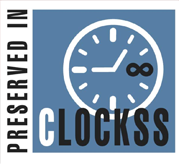Real-world efficacy and safety of risankizumab in moderate-to-severe psoriasis: experience from a tertiary center
Ana Ferreirinha, Department of Dermatology and Venereology, Hospital de Santo António dos Capuchos, Unidade Local de Saúde São José; Department of Dermatology and Venereology, NOVA Medical School, Faculdade de Ciências Médicas; Centro Clínico Académico de Lisboa. Lisboa, Portugal Clara Valente, Department of Dermatology and Venereology, Hospital de Santo António dos Capuchos, Unidade Local de Saúde São José; Centro Clínico Académico de Lisboa. Lisboa, Portugal Inês Aparício-Martins, Department of Dermatology and Venereology, Hospital de Santo António dos Capuchos, Unidade Local de Saúde São José; Centro Clínico Académico de Lisboa. Lisboa, Portugal Maria J. Paiva-Lopes, Department of Dermatology and Venereology, Hospital de Santo António dos Capuchos, Unidade Local de Saúde São José; Department of Dermatology and Venereology, NOVA Medical School, Faculdade de Ciências Médicas; Centro Clínico Académico de Lisboa. Lisboa, Portugal Joana Cabete, Department of Dermatology and Venereology, Hospital de Santo António dos Capuchos, Unidade Local de Saúde São José; Department of Dermatology and Venereology, NOVA Medical School, Faculdade de Ciências Médicas; Centro Clínico Académico de Lisboa. Lisboa, Portugal Ana L. João, Department of Dermatology and Venereology, Hospital de Santo António dos Capuchos, Unidade Local de Saúde São José; Centro Clínico Académico de Lisboa. Lisboa, Portugal
Objectives: To assess the real-world effectiveness and safety of risankizumab in patients with moderate-to-severe psoriasis, including special area involvement. Methods: A retrospective cohort study was conducted in a Portuguese tertiary hospital, including adult patients with moderate-to-severe psoriasis treated with risankizumab for at least 16 weeks. Clinical assessments were performed at weeks 16 and ≥ 52. Efficacy was measured by PASI-75, PASI-90, and PASI-100 responses. Safety was evaluated based on reported adverse events (AE) and treatment discontinuations. Results: A total of 114 patients were included, 63.2% male, with a median age of 50 years and a median disease duration of 16 years. The median number of comorbidities per patient was 2. At week 16, PASI-90 and PASI-100 were achieved by 71.3% and 61.4%, respectively. At ≥ 52 weeks, PASI-90 was achieved by 86.6% and PASI-100 by 79.4%. Complete resolution was observed in 95.2% of scalp psoriasis, 88.5% of nail psoriasis, and 54.5% of palmoplantar psoriasis cases. Psoriatic arthritis resolved completely in 67.7% of cases. Three malignancies were reported without an established causal relationship to risankizumab. Overall, 12.3% discontinued treatment, most due to primary or secondary efficacy failure. No other AEs were reported. Conclusion: Risankizumab demonstrated high effectiveness and a favorable safety profile in a real-world setting, with robust short- and long-term outcomes, including in special areas and psoriatic arthritis. These findings support its use in routine clinical practice. Further real-world studies with comparators are warranted.
Keywords: Psoriasis. Risankizumab. Interleukin-23. Real-world evidence. Biologics. Psoriatic arthritis.



